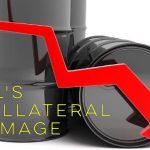I have a confession to make: I love confessions. I spent countless hours in the late 1990s listening to sports radio dissect Mark McGuire’s acknowledgement of steroid use. And who did not get chills reading Perry Smith’s account of the Clutter family murders in Capote’s In Cold Blood?
However, the admission of transgression that captivated me the most over the last decade did not receive the kind of attention it likely deserved. Richard Fisher corroborated (January, 2016) that the Federal Reserve front-loaded a tremendous asset rally starting in 2009. The former President of the Federal Reserve Bank of Dallas candidly explained that committee members, himself included, set out to create a wealth effect, regardless of how mal-investments would reverse the effect in future years.
Some argue that Fisher’s confession was not particularly earth-shattering. After all, many market observers understood what the Fed had been trying to accomplish from the get-go. The Fed manipulated borrowing costs lower and increased capital at member financial institutions so that those banks would lend money to households, businesses and governments. The demand for risk-on assets from stocks to higher-yielding debt to real estate skyrocketed.
It is worth noting that Fisher implicated other central banks as well. With regard to what drove the remarkable bull market in stocks, he said, “It was, the Fed, the Fed, the Fed, the European Central Bank, the Japanese Central bank… all quantitatively driven by central bank activity. That’s not the way markets should be working.”
Keep in mind, global stocks had been coming unglued in January of 2016. Large-capitalization U.S. stocks had dropped into a 10%-plus correction. Smaller company U.S. stocks had breached a 20% demarcation line. And non-U.S. equities had plummeted more than 20% from their peaks.

So what did central banks do? The European Central Bank (ECB) as well as the Bank of Japan (BOJ) increased their quantitative easing asset purchases dramatically. Meanwhile, the Fed abandoned plans for four rate hikes in 2016, opting for a single one in December.


















Leave A Comment